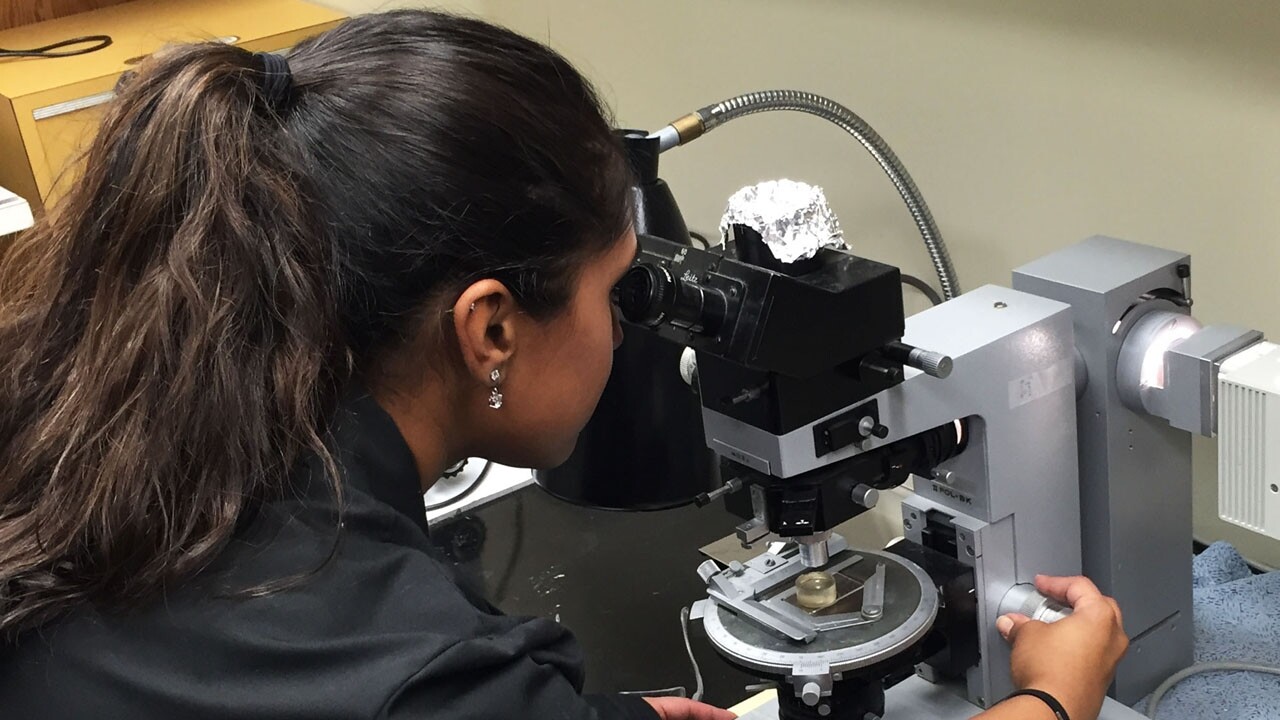The asteroids that are whizzing around our little corner of space are basically the crumbs left over from the formation of the solar system, and that means they have a lot to tell us about those early years. Now, scientists have studied a particularly weird space rock and found that it's the oldest known igneous meteorite, dating back to one of the very first volcanic eruptions in the solar system.
About 4.568 billion years ago, the Sun burst into being, surrounded by a dusty, gassy disk that would eventually clump together to form planets and moons. But the ones we know today didn't just spring up at that stage – they all formed slowly over millions of years, as protoplanets were born and died, smashing together to create larger planets and splintering off to make moons. The leftovers gathered into the asteroid belt between Mars and Jupiter, and the Kuiper belt beyond Neptune.
Although recent research has found that most objects in the asteroid belt could trace their roots to just five or six extinct parent bodies, not all meteorites can be so easily classified. Take, for example, the strange rock known as Northwest Africa (NWA) 11119, which was discovered in a sand dune in Mauritania in 2016.
Even at a glance, NWA 11119 is unusual: it has a much lighter color than most meteorites, and it's dotted with green crystals. For the new study, researchers used an electron microprobe and conducted CT scans to examine the meteorite's makeup and age. NWA 11119 was found to be rich in silica and was an achondrite meteorite, meaning it had volcanic origins.

"The mineralogy of this rock is very, very different from anything that we've worked on before," says Poorna Srinivasan, lead author of the study. "I examined the mineralogy to understand all of the phases that comprise the meteorite. One of the main things we saw first were the large silica crystals of tridymite which is a similar to the mineral quartz. When we conducted further image analyses to quantify the tridymite, we found that the amount present was a staggering 30 percent of the total meteorite – this amount is unheard of in meteorites and is only found at these levels in certain volcanic rocks from the Earth."
Despite that similarity, this is no Earthly rock. Analyzing the oxygen isotopes inside NWA 11119 revealed that it is of alien origin – but exactly where it came from remains a mystery.
"Based on oxygen isotopes, we know it's from an extraterrestrial source somewhere in the solar system, but we can't actually pinpoint it to a known body that has been viewed with a telescope," says Srinivasan. "However, through the measured isotopic values, we were able to possibly link it to two other unusual meteorites (Northwest Africa 7235 and Almahata Sitta) suggesting that they all are from the same parent body – perhaps a large, geologically complex body that formed in the early solar system."

Using inductively coupled plasma mass spectrometry, the team was able to accurately determine NWA 11119 was 4.565 billion years old. That's a mere three million years after the birth of the solar system – a blink of an eye on the cosmic scale.
"The age of this meteorite is the oldest, igneous meteorite ever recorded," says Carl Agee, co-author of the study. "Not only is this just an extremely unusual rock type, it's telling us that not all asteroids look the same. Some of them look almost like the crust of the Earth because they're so light colored and full of SiO2. These not only exist, but it occurred during one of the very first volcanic events to take place in the solar system."
The research was published in the journal Nature Communications. The researchers show off NWA 11119's weirdness in the video below.
Source: University of New Mexico







